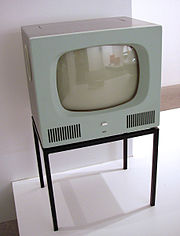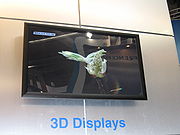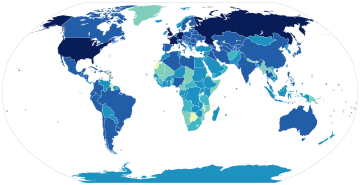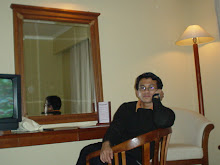

Television is a widely used telecommunication medium for sending (broadcasting) and receiving moving images, either monochromatic ("black and white") or color, usually accompanied by sound. "Television" may also refer specifically to a television set, television programming or television transmission. The word is derived from mixed Latin and Greek roots, meaning "far sight": Greek tele (τῆλε), far, and Latin vision, sight (from video, vis- to see, or to view in the first person).
Commercially available since the late 1930s, the television set has become a common communications receiver in homes, businesses and institutions, particularly as a source of entertainment and news. Since the 1970s, recordings on video cassettes, and later, digital media such as DVDs, have resulted in the television frequently being used for viewing recorded as well as broadcast material.
A standard television set comprises multiple internal electronic circuits, including those for tuning and decoding broadcast signals. A display device which lacks these internal circuits is therefore properly called a monitor, rather than a television. A television set may be designed to handle other than traditional broadcast or recorded signals and formats, such as closed-circuit television (CCTV), digital television (DTV) and high-definition television (HDTV).








